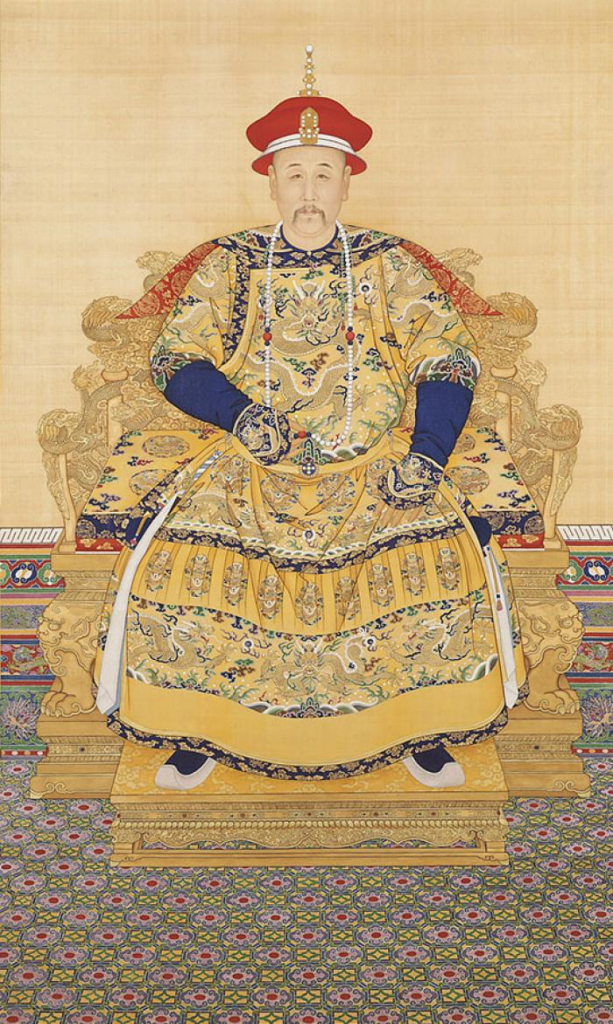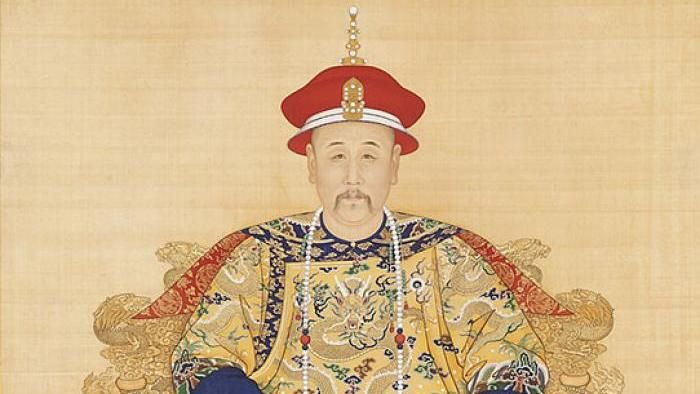The Yongzheng Emperor (Yinzhen; 13 December 1678 – 8 October 1735) was the fourth Emperor of the Qing dynasty, and the third Qing emperor to rule over China proper. He reigned from 1722 to 1735. A hard-working ruler, the Yongzheng Emperor’s main goal was to create an effective government at minimal expense. Like his father, the Kangxi Emperor, the Yongzheng Emperor used military force to preserve the dynasty’s position.
Although Yongzheng’s reign was much shorter than that of both his father (the Kangxi Emperor) and his son (the Qianlong Emperor), the Yongzheng era was a period of peace and prosperity. The Yongzheng Emperor cracked down on corruption and reformed the personnel and financial administration.His reign saw the formation of the Grand Council, an institution which had an enormous impact on the future of the Qing dynasty.

Yinzhen was the eleventh recorded son of the Kangxi Emperor, and the fourth prince to survive into adulthood. His mother, historically known as Empress Xiaogongren, was originally a court attendant from the Manchu Uya clan.
Yongzheng’s quote
A notable quote from Yinzhen captured during his reign as the Yongzheng Emperor in the 1720s expresses his imperial will:
小事小料理,不可因小而忽之·,大事大振作,不可因難處而隱諱。朕意若果能如此實心奉行,以忠正一一字感化,不數年,賊亦人也。見文武大臣實心忠勇為國,屬員清正愛民,營伍整齊,士卒曉勇,而百姓不懷如是德,不畏如是威,仍去成群為匪者,朕想必無此理也。
In short, after several years of political chaos, Yongzheng earnestly strived to restore a functional court with “good government”, immediately after he ascended the throne in 1723 CE, to stabilize Qing into a unified and harmonious empire. In 1733 CE, Yongzheng successfully institutionalized the Grand Council, which allows Qing to relay communication effectively and efficiently from region to region,[5] thereby enabling the implementation of his domestic reform policy.
Perhaps the Yongzheng era may have been overshadowed by his predecessor’s accomplishments, the Kangxi emperor, and his achievements may not have been as glorious as his successor, the Qianlong emperor; however, the Yongzheng era did serve as a remediation to the people, and resentments began to gradually decrease. Hence the Yongzheng era was a peaceful and prosperous reign of Qing China.
Porcelain
Yongzheng Emperor personally approved every aspect of the ceramics produced in the imperial workshop from decoration through to dimensions. Official records also included his comments such as “refine (to achieve) an elegant presence” and to “make thinner”. Ceramics made during Kangxi Emperor’s reign tended to be more rustic and minimal, paying homage to ancient Chinese traditions, whilst Yongzheng ceramics are handsome, delicate and refined. The fine potting, exquisite lightness, gentle and elegant forms all contribute to a refined subtlety that reflects the temperament of the emperor himself.

A FINE AND EXCEEDINGLY RARE BLUE AND WHITE ‘FRUIT AND FLOWER SPRAY’ VASE
YONGZHENG SIX-CHARACTER SEAL MARK IN UNDERGLAZE BLUE AND OF THE PERIOD (1723-1735)
A diverse range of different wares was produced during this period including blue-and-white, falangcai, famille-rose, doucai, monochrome and archaistic wares, reaching a brilliant peak of ceramic production. Yongzheng period famille-rose featured mature techniques, a strong three-dimensional sense and a rich variety of colours. Floral decorations found on Yongzheng period famille-rose ware inherited the artistic style of early Qing painting master Yun Shouping, whose floral painting highlighted the refreshing and graceful beauty of different flowers.
During Yongzheng’s reign, a huge amount of resources were devoted to the production in the imperial kiln, whose supervisors Nian Xiyao and Tangying recruited the best craftsmen in the country to create a wide variety of innovative wares that proved to form a triumphant chapter in the history of Chinese ceramics.
©https://www.sothebys.com/en/articles/the-age-of-elegance-qing-dynasty-yongzheng-ceramics

